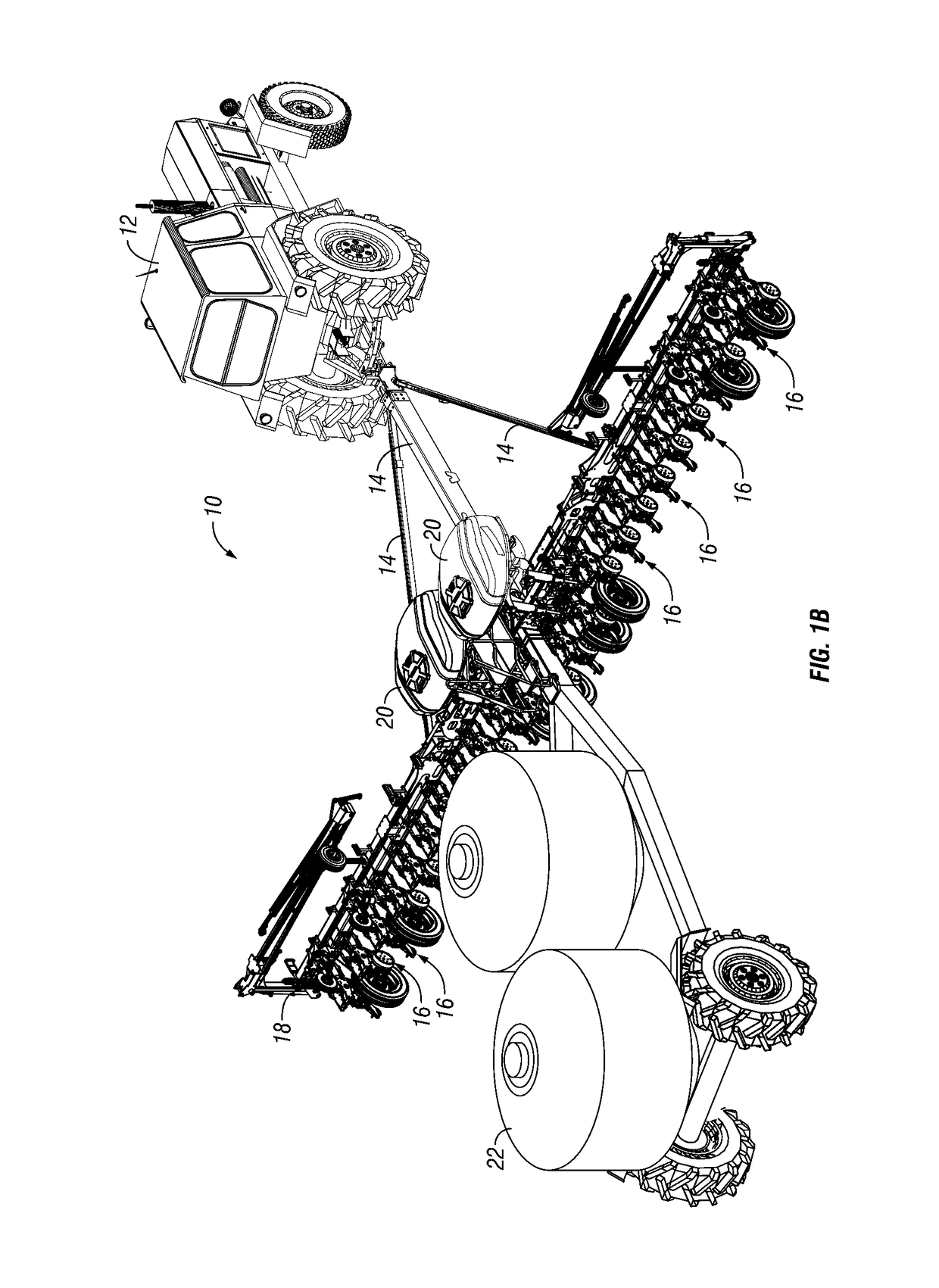However, efforts in
soil conservation have led to an increase in no-till or low-till farming, whereby the soil generally remains undisturbed through
tillage.
The technique often leads to reduced
soil temperature and increased soil
moisture and field residues with associated elevated levels of
disease inoculum, weeds and pests, paradoxically increasing the need for and value of seed treatment.
As a result, such farmers are especially sensitive to returning a profit in any given year.
Further, huge negative swings in commodity prices can cause farmers who own their land to no longer afford to continue farming as a living.
The absence of regularly rotating crops often takes a great
toll on the soil, resulting in increased levels of diseases, weeds and / or pests and again increasing the need for and value of prescriptively treating seed.
However, treating seeds prior to bagging them is deficient in several respects.
For example, the greater the elapsed time between application of the substances to the seed and planting of the same can decrease the
potency of the substances, particularly in the cases of biocides.
While sometimes seeds can be pretreated based on parameters relevant at the time of treatment, they still may not be relevant at the time of planting.
While this is more efficient and profitable for the upstream and downstream applicators, it is deficient in several respects.
For example, upstream and downstream treatment decisions often overlook what combination of seed and treatment is best suited for particular farmers, and farmers often are not satisfied with the amount of seed
treatment choices they have available to them for purchase.
Similarly by way of example, batch application of substances can sometimes result in uneven distribution of the same within the batch, and can sometimes further result in shedding and even loss of the applied substances as the seeds collide with one another due to vibration and the like.
By way of further example, batch application prior to bagging limits the ability for seed companies to tailor the combination of seed and seed treatment to the particular planting conditions where a particular seed or group of seeds will be planted.
Despite the benefits of chemical seed treatment substances, the bulk application of chemicals to an agricultural field can have unintended and / or negative consequences.
However, many biological alternatives have a significantly shorter
shelf life than chemical alternatives.
However, some biological alternatives are not very durable and / or have shelf lives that can require treatment to occur a few days, hours or even minutes prior to planting.
Because of these and other industry practices, many of these less durable biological alternatives are often used sub-optimally or do not even get commercialized.
However, despite these significant investments, biological research and development takes significant time and resources.
Thus, it is unlikely that biological seed treatment alternatives will completely replace chemical seed treatment substances.
Similarly, input costs (e.g., seed and seed
treatment costs) often rise, sometimes significantly.
Partly as a result of rising input costs, some of the larger and more sophisticated farm operators have started demanding the ability to use only those inputs that are best suited for their fields.
However, as described above, the industry's batch, pre-bagging treatment and other practices have been a roadblock to meeting demand for prescriptive seed treatments.
Furthermore, conditions during planting are often dynamic, which only further enhances the need for prescriptive seed treatment.
If for any reason, such as
adverse weather, a farmer is unable to plant in the desired field on the anticipated day, the farm operator is often forced to choose between not planting all the seeds loaded the prior day or planting the pre-loaded seeds in a different field where the conditions resulting from
adverse weather are better for planting.
If the farm operator chooses the former, it often results in negative yield performance due at least in part to fewer effective growing days.
Conversely, if the farmer chooses the latter, it also often results in a negative yield performance, especially if the non-
adverse weather-related
field conditions make the combination of seed and seed treatment not well suited for a field other than the originally intended field.
Notably, current prescriptive
agriculture systems and methods do not contemplate prescriptively treating seeds during planting.
For example, in furrow
fertilizer application systems often damage seeds that come into direct contact with the
fertilizer.
For example, abrasion of seed treatment products or dust off can occur during seed packaging, seed transport, planter loading, movement in planters across the field and otherwise during the planting operation.
Some have suggested that dust off from loading seeds that have been pre-treated with
neonicotinoid and / or other seed treatments could have a negative
impact on the health of bees and other important insects.
 Login to View More
Login to View More  Login to View More
Login to View More 


